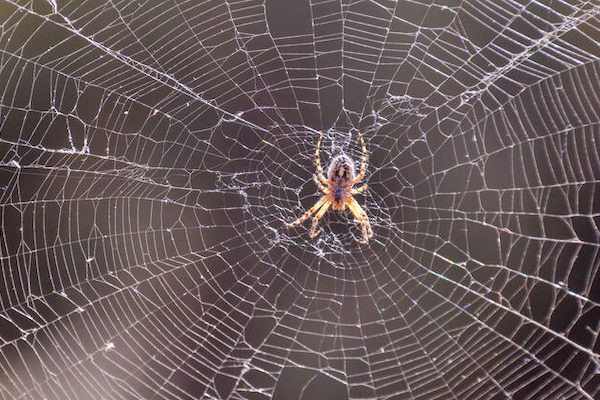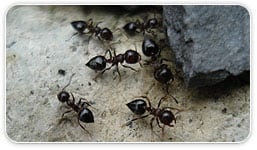 Pavement Ants
Pavement Ants
Range in size from 1/16 into 1/8 in length. They generally nest in soil, most times in the cracks of the pavement hence the name. They can also be found behind walls inside the home where dampness builds. They also come up underneath slabs and can sometimes be very difficult to control.
 Carpenter Ants
Carpenter Ants
Range in size from ¼ to 1 inch long. They prefer damp wood to build nests. Besides seeing live or dead ants, another sign there are ants present is sawdust. They feed mainly on sweets. They are very difficult to control. They can nest indoors and out. If outside, they can travel inside your home from up to 100 yards away. Sometimes traveling from this distance, eliminating the nest is not always possible.
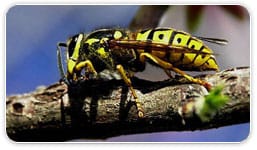 Yellow Jacket
Yellow Jacket
These wasps are very aggressive and will nest in many places, underground, in hollow trees, in wall voids, attics, and behind the siding. They are very aggressive and if provoked they will sting multiple times. Stings are painful and for allergic individuals, stings can be life-threatening.
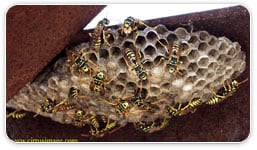 Solitary Wasp
Solitary Wasp
Paper wasp. Constructs a nest in the shape of an upside-down umbrella. They generally nest in gutters or under ledges, in outdoor light fixtures, and usually always in a shaded area where protected from rain.
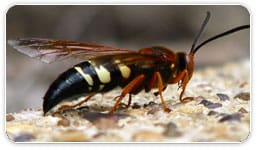 Secada Killer
Secada Killer
These wasps nest underground. Signs of nesting are big mounds of excavated dirt on lawns. Like their name, they hunt cicadas and use them as food for their young.
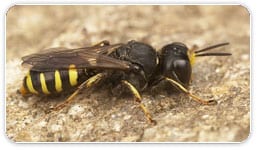 Digger Wasp
Digger Wasp
Like cicada killers, they also nest in the ground but make smaller mounds leaving a perfectly drilled hole. They also hunt the prey for their offspring.
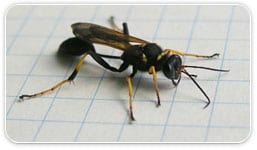 Mud Dauber
Mud Dauber
Like cicada killers they also nest in the ground but make smaller mounds leaving a perfectly drilled hole. They also hunt the prey for their offspring.
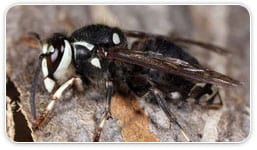 Bald Faced Hornet
Bald Faced Hornet
This species is actually a wasp but is given the hornet name because it builds a nest out in the open usually hanging from a tree limb or under a soffit. The size of the nest generally ranges from the size of a softball to the size of a basketball. Like yellowjackets, these wasps are very aggressive and will sting even if you get too close to a nest. Do not attempt to treat them on your own.
 Carpenter Bee
Carpenter Bee
These bees only nest in wood. They look like bumble bees but larger. They drill perfect holes in wood and the males will be seen hovering around the holes protecting females and larvae. Only females will sting but they all can be intimidating. They can do a good amount of damage to soffits, decks, playgrounds, garages, and any other wood framing around the house. They must be stopped or the damage will get worse every year.
 Bumble Bee
Bumble Bee
They nest underground only and are not that aggressive but will bite if provoked.
 Mice
Mice
A mouse only needs ¼ in to enter a home. They leave droppings, and urine, and they will chew electrical wires and bags and boxes of food that get contaminated. Sealing all cracks and crevices will help but this can not be done until control measures are taken. Let us inspect, control, and make the right recommendations.
 Rat
Rat
Like the mouse, a rat is similar except it is larger in size and will nest inside or out. Outside you see burrows of dirt going under rocks, fences, sheds, garages, crawl spaces, etc.
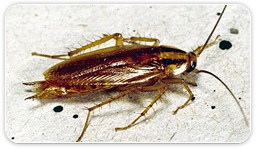 German Cockroach
German Cockroach
The most common is the german cockroach. They can easily get out of control because of rapid reproduction. Each female produces 30 to 50 babies every 3 to 4 weeks. The female babies are ready to produce their own in 30 days. Hundreds to thousands will be present within weeks. They generally can be found in the kitchen and bathroom. They need water to survive and will eat anything.
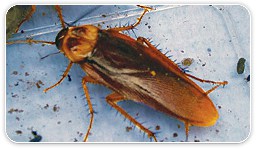 American Cockroach
American Cockroach
American roach aka “water bugs”. American cockroach adults grow to an average length of around 4 cm. They are reddish brown and have a yellowish margin on the body region behind the head. The insect can travel quickly, often darting out of sight when someone enters a room and can fit into small cracks and under doors despite its fairly large size. It is considered one of the fastest-running insects.
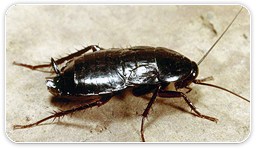 Oriental Cockroach
Oriental Cockroach
The oriental cockroach (Blatta orientalis), also known as the waterbug, is a large species of cockroach, adult males being 18–29 mm and adult females being 20–27 mm. It is dark brown to black in color and has a glossy body. They can often be found around decaying organic matter, and in sewers, drains, damp basements, porches, and other damp locations.
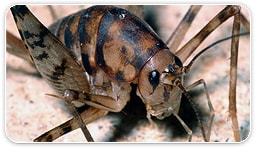 Camel Crickets
Camel Crickets
The Camel Cricket is a recent pest to homeowners showing up in basements and garages. They like dampness and will eat insects and paper. They do not make noise but will hop very high. They are active all year round but a lot of complaints come in the Fall.
 Earwigs
Earwigs
Earwigs are most common in July and August and can be seen in the basement and main floor of the home. They need dampness and will mainly nest under siding and shingles.
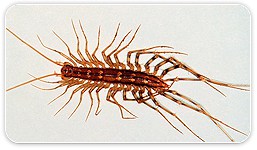 House Centipede
House Centipede
Found in the basement. Looks hairy and moves very quickly across the floor.
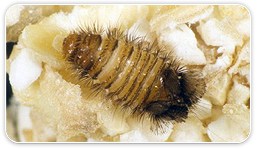 Carpet Beetles
Carpet Beetles
Found in most homes the carpet beetle can do severe damage to carpeting. Signs would be larvae looking like a cocoon.
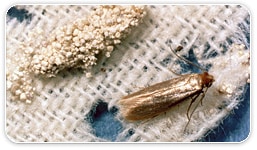 Clothes Moth
Clothes Moth
Clothes moth feeds on natural fiber only like wool. Signs would be larvae like a cocoon around clothes in draws and closets and also signs of holes in clothes.
 Grain Moth
Grain Moth
Also known as pantry moth or Indian meal moth. These moths will infest all types of grain products in your kitchen or pantry or anywhere you store these types of dry foods. The source comes from food manufacturers and will come from a box of pasta or grain. It’s sometimes difficult to stop early so larvae will spread and the kitchen will have to be treated. Signs include larvae cocoon-like along edges of walls and ceiling and small brown moths flying around.
 Fleas
Fleas
Fleas are 1/16 to 1/8 in and feed on the blood of their hosts. They will feed on humans and pets and can go unnoticed for weeks. Besides having your pet treated by a vet, your home must be treated along with thorough vacuuming.

CALL 516-656-7833
Schedule A No Obligation Quote
Identifying your problem is the first step to solving it. Let us come by and inspect your home free of charge to properly identify your pest problem. Whether it’s insects, rodents, or wildlife removal, we can rid your home of these unwanted invaders.

RECENT NEWS
Optimum Pest Blog
The Optimum Pest Control blog offers helpful articles about the pests that may be invading your home. Check back for new articles!
